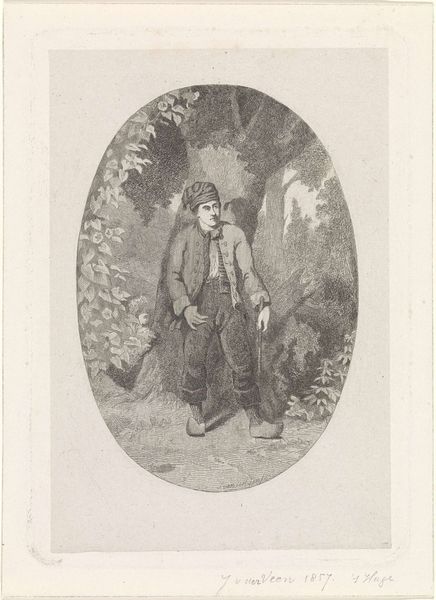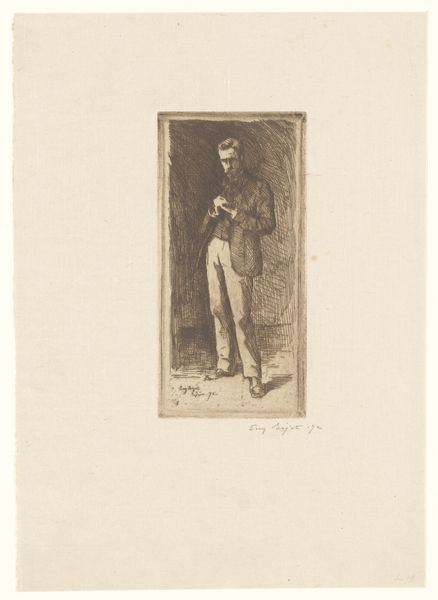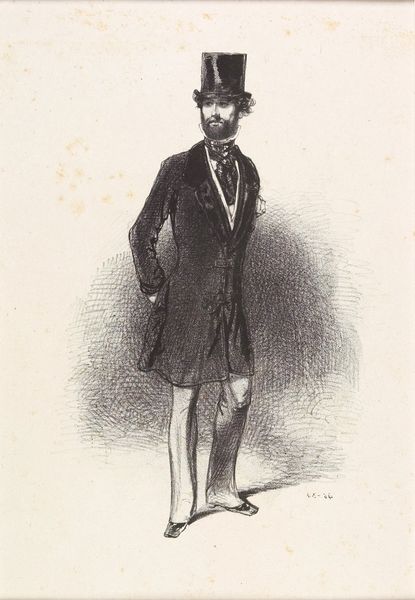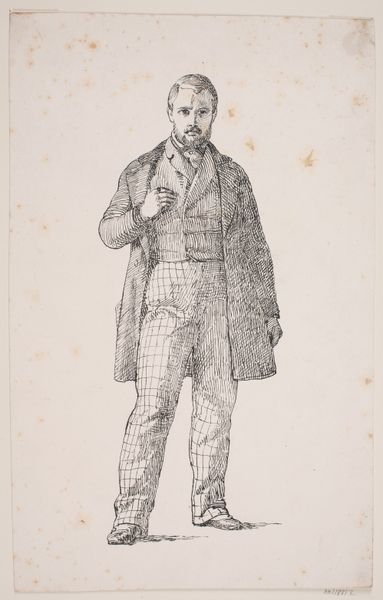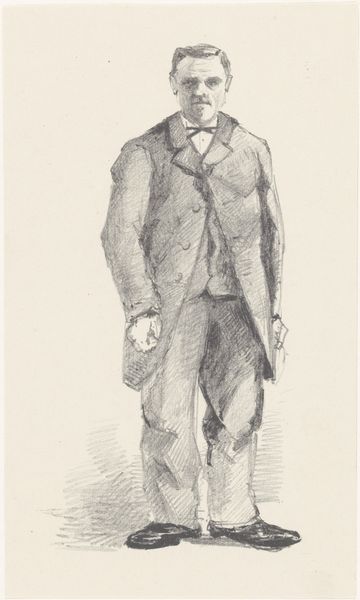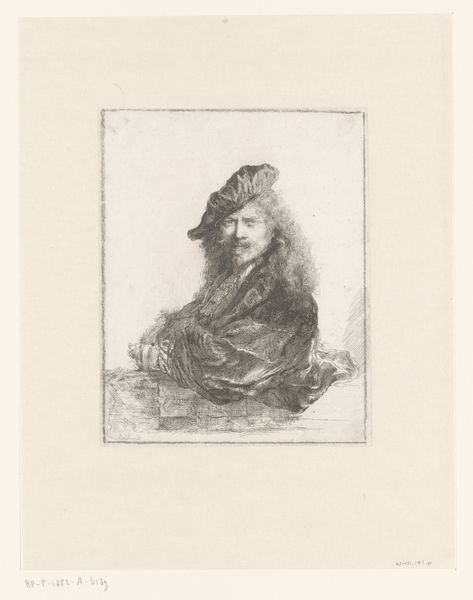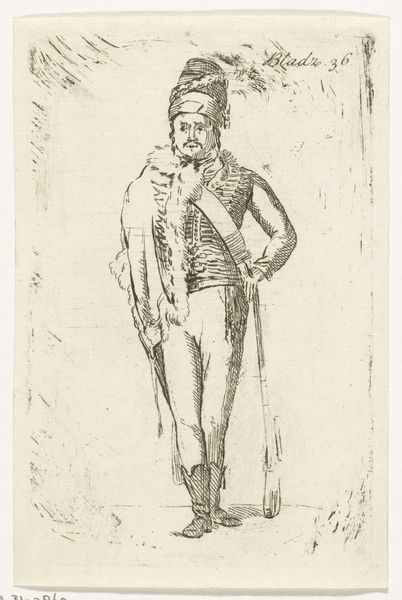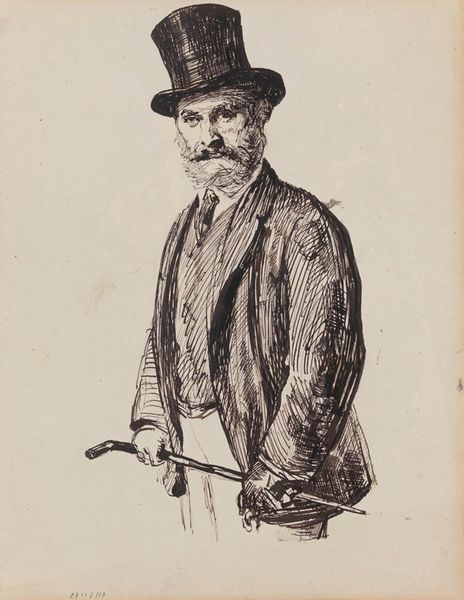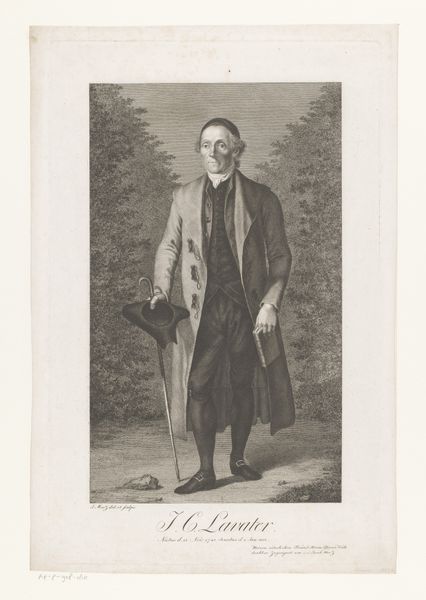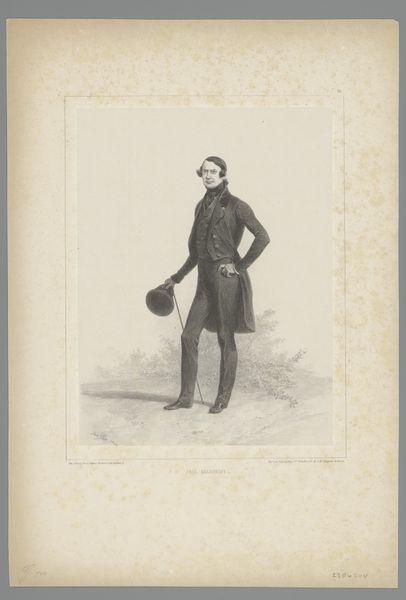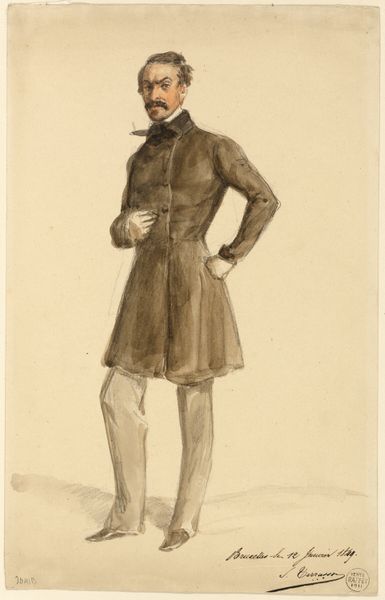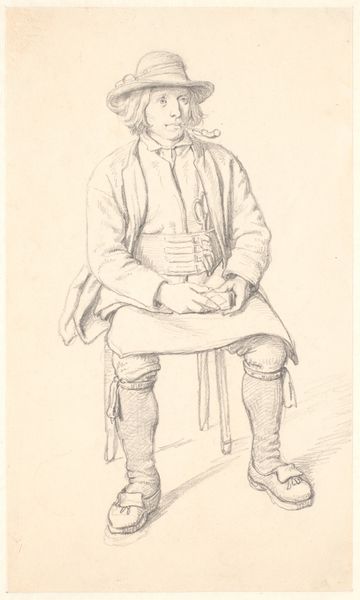
The Tragic Actor: Rouvière in the Role of Hamlet 1865 - 1866
0:00
0:00
drawing, print, etching
#
portrait
#
drawing
#
negative space
# print
#
impressionism
#
etching
#
charcoal drawing
#
figuration
#
portrait reference
#
history-painting
#
realism
Dimensions: plate: 14 3/8 x 8 9/16in. (36.5 x 21.7cm) sheet: 17 3/4 x 11 5/8in. (45.1 x 29.5cm)
Copyright: Public Domain
Curator: Welcome. Before us is an etching by Edouard Manet, dating from 1865 to 1866, entitled "The Tragic Actor: Rouvière in the Role of Hamlet". Editor: Gosh, he looks utterly defeated, doesn't he? All that inky darkness seems to weigh him down. Like Hamlet carrying the weight of Elsinore on his doublet. Curator: Indeed. Manet captures the melancholic essence of the character. Rouvière, a well-known actor, embodies Hamlet’s internal struggle, a popular theme that resonated within the social and political landscape of mid-19th-century France. This work reflects a wider cultural fascination with portraying influential figures in iconic, historical roles. Editor: And the technique is just fascinating. That incredibly rough texture. See how he uses all these tiny, erratic lines to build up form and atmosphere? It is as though the scene is flickering, reflecting the actor's mental instability. It reminds me a bit of charcoal drawing. I wonder if that's part of why I love it. Curator: Precisely. Manet's use of etching emphasizes the drama through stark contrasts and a rather simplified composition that throws our subject to the very front, a very modern move in how the image is laid out and consumed. Note the dramatic shadow at his feet. The figure dominates the frame and leaves little room to explore outside the sitter. The negative space here actually feels full. Editor: Full of a suffocating melancholy, maybe? It's all quite moody. And you can almost hear him muttering one of Hamlet’s famous soliloquies. "To be or not to be," indeed. The composition and subject almost feel modern; so much portraiture back then focused on royalty and nobility. Curator: I agree. By portraying Rouvière as Hamlet, Manet elevates the status of the actor and speaks to a larger debate about cultural icons and the theatre’s role in society. It’s a social commentary as much as it is an aesthetic statement. Editor: Absolutely. This print manages to be both deeply personal and broadly resonant. The power of art, really. I like pondering who sees their reflection, their tragedy, within this "Tragic Actor." Curator: Yes, it holds a rather striking and immediate intimacy while referencing powerful political, social, and theatrical questions of the era.
Comments
No comments
Be the first to comment and join the conversation on the ultimate creative platform.
